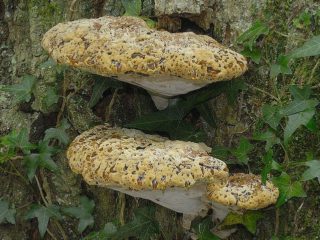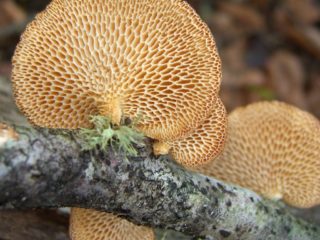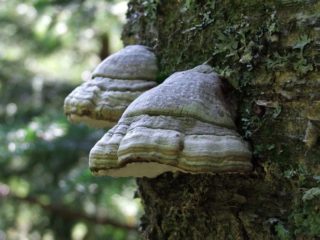Content
The cinnabar-red tinder fungus is classified by scientists as belonging to the Polyporaceae family. The second name of the mushroom is cinnabar-red pycnoporus. The Latin name for the fruiting bodies is Pycnoporus cinnabarinus.
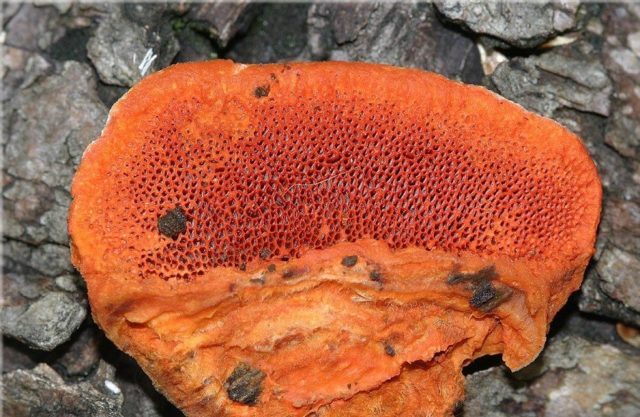
The species has a very memorable coloring
Polypores include types of fungi that grow on wood. It is very rare to find it on the ground.
Description of the cinnabar-red tinder fungus
The mushroom has a sessile, hoof-shaped fruiting body. Sometimes it is round. The diameter of the mushroom is 6-12 cm, thickness is about 2 cm. The color of the tinder fungus changes as it grows. Young specimens are painted cinnabar red, then they fade and acquire an ocher or light carrot tone.The pores always retain a cinnabar-red color. The fruit is adherent, the flesh is red, corky structure. The upper surface of the mushroom is velvety. Cinnabar-red pycnoporus is an annual mushroom, but can persist on the tree for a long time. The mushroom owes its color to the dye cinnabarin of a similar shade, which, according to researchers, has antiviral and antimicrobial effects.
The spores of the species are tubular, medium in size, white powder.
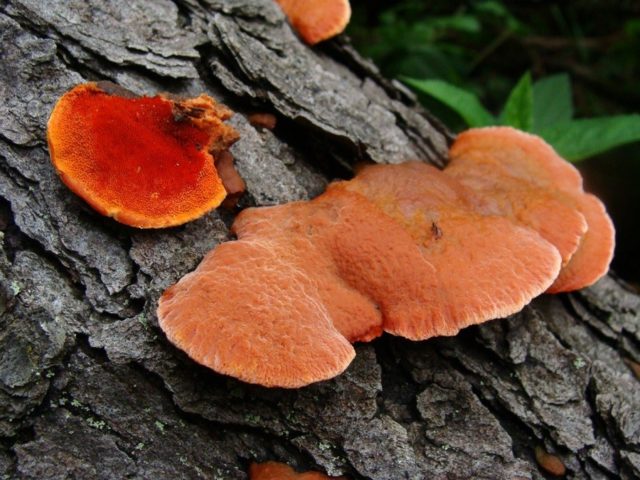
Settles on weakened or dead trees
Where and how does it grow
The red polypore is considered cosmopolitan. It has a wide growing range. In Russia it is found in any region. Only tropical climates are not suitable for the mushroom; there are no such areas in the Russian Federation. Therefore, tinder fungus is found throughout the territory from the European part of the country to the regions of the Far East.
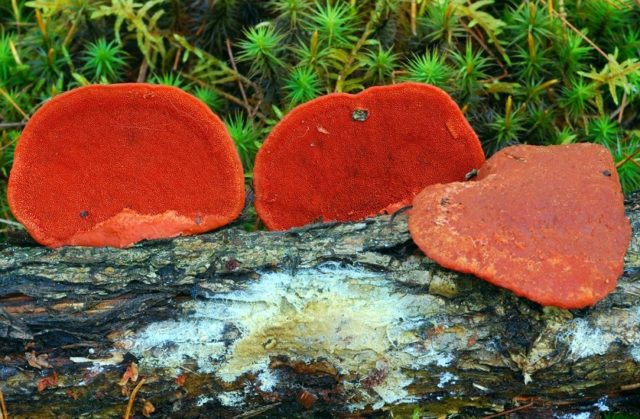
Mushrooms grow in groups, arranged in random order
Pycnoporus germinates on dead or weakened trees. It can be found on branches, trunks, stumps. Prefers deciduous trees - birch, rowan, aspen, cherry, poplar. As a rare exception, the red tinder fungus can settle on needles. Fungi cause the development of white rot, but it does not penetrate deep into the wood.
Fruiting from late May to November. The fruiting bodies on the trees persist throughout the winter.
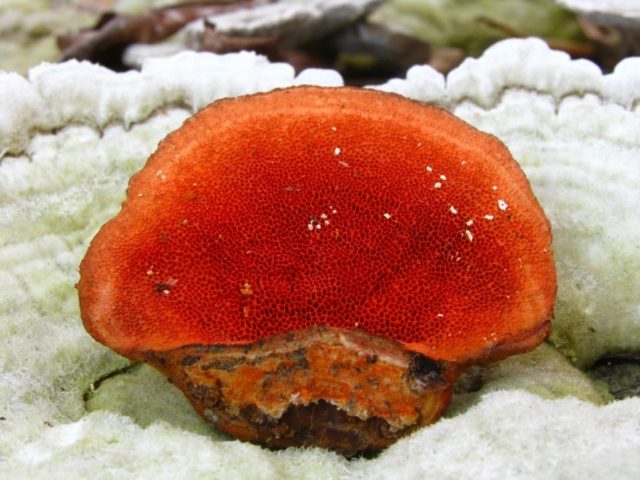
Fruit bodies look like a bright spot among the white snow
How fruiting bodies grow is shown in the video:
Is the mushroom edible or not?
Belongs to the inedible group; the species is not eaten. No toxic substances were found in its composition, but the rigidity of the fruiting bodies does not allow preparing a single edible dish from them.
Doubles and their differences
The coloring of the fruiting body is so unique that it is almost impossible to confuse it with any other species.But there are still slightly similar specimens. In the Far East there is a similar pycnoporus - blood-red (Pycnoporus sanguineus). Its fruiting bodies are much smaller and more intensely colored. Therefore, due to inexperience, mushroom pickers can confuse the species.
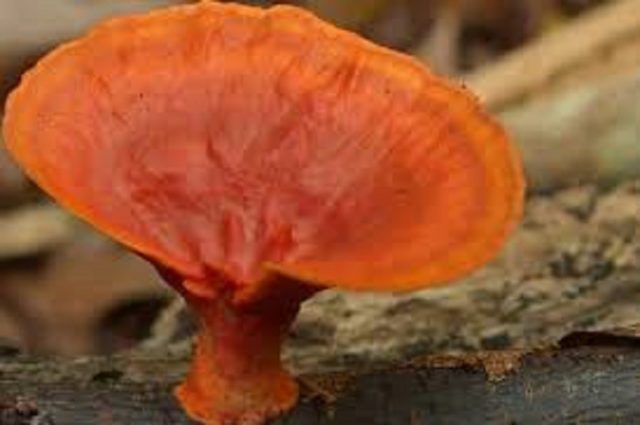
The small size of the fruiting body clearly distinguishes the blood-red polypore from the cinnabar-red one.
Another species that has an external resemblance to cinnabar red is Pycnoporellus fulgens. Its cap is orange in color and is found on spruce wood. These characteristics make it possible not to confuse the species.
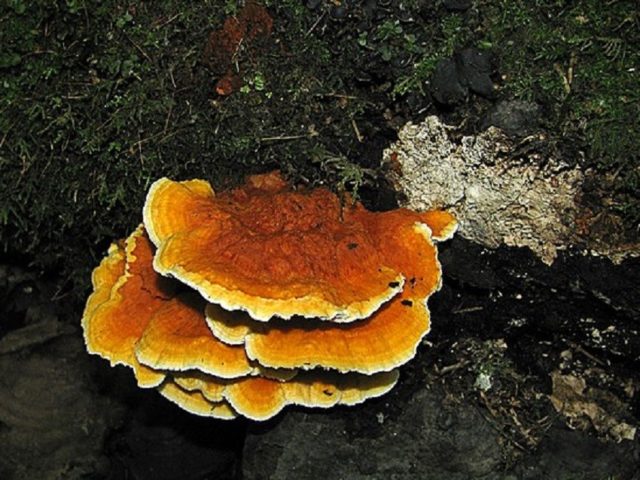
The species grows on spruce wood, unlike the cinnabar-red tinder fungus
The common liverwort (Fistulina hepatica) has a slight external resemblance. This is an edible Pycnoporus from the family Fistulinaceae. This mushroom has a smooth, shiny cap surface. The pulp is thick and fleshy. Prefers to settle on oak or chestnut trunks; fruiting season is late summer.
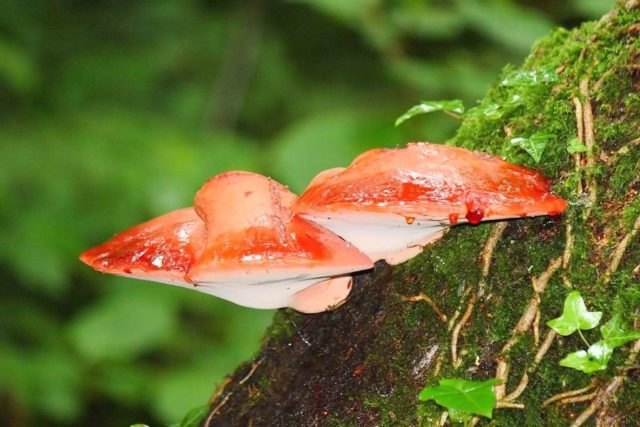
Many people are happy to include liverwort in their diet.
Application of cinnabar-red polypores in industry
As the fungus develops, it destroys the lignin contained in the wood. This process occurs with the help of enzymes that are used in the paper industry - laccase. Therefore, the type is called technical and is used in the production of cellulose from industrial waste. Laccase imparts woodiness to plant cells.
Conclusion
The cinnabar-red tinder fungus is not found very often. Studying the external description will help not to confuse the mushroom with edible varieties of the family.


